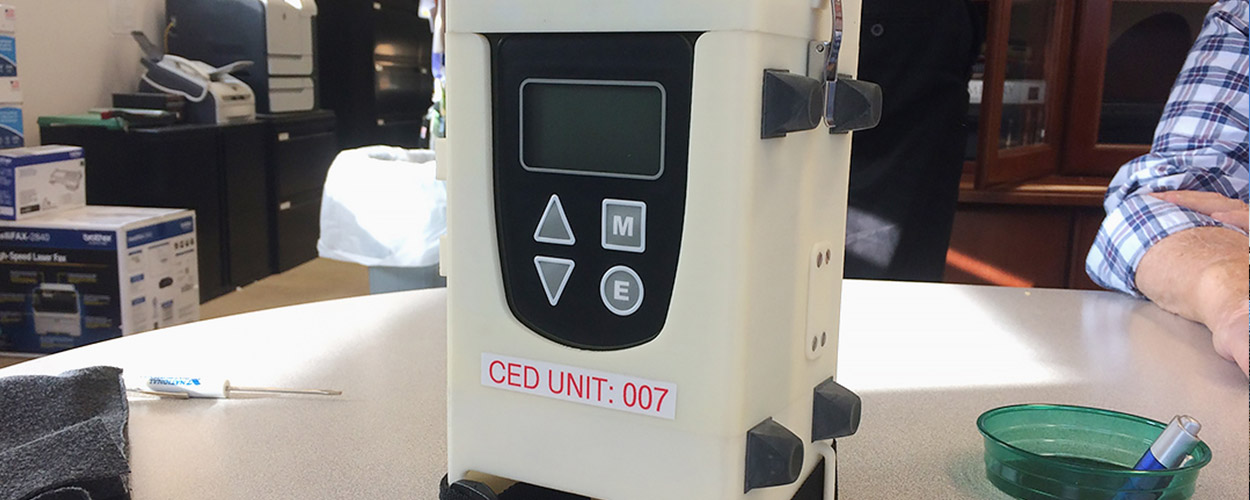As Threats Change, the Reliable Joint Chemical Agent Detector Adapts
As Threats Change, the Reliable Joint Chemical Agent Detector Adapts
Longtime chemical agent detector in development for explosives detection
By Bradley Kroner, ECBC
In use for more than 10 years, and with tens of thousands in service, the Joint Chemical Agent Detector (JCAD) has been a critical aid to the warfighter for detecting chemical warfare agents.
For the first years of its use, the portable JCAD was used exclusively for real-time, automatic chemical warfare agent vapor detection, using ion-mobility spectrometry, which identifies ionized molecules in the gas phase based on their mobility in a carrier buffer gas.
However, as chemical biological threats evolve, the warfighter’s tools must evolve too. Six years ago, the original M4 JCAD was improved with better electronics and a built-in pre-concentrator, which better concentrates the sample for detection. This model is called the M4A1 JCAD.
Now, the M4A1 JCAD is under further development.
In 2010, the U.S. Army identified a need to determine whether any of its existing, fielded chemical agent detectors could be modified to detect homemade explosives and unknown bulk explosives — an increasing priority for land operations.
With funding from the Army Technology Objective Program, the U.S. Army Research, Development and Engineering Command Chemical & Biological (RDECOM C&B) Center found a solution: the JCAD. Used widely and well-known by the armed service branches, the JCAD was already in the hands of warfighters, making it a top choice for the project.
“Currently, distributing explosive detectors to warfighters would require them to carry an additional piece of equipment,” said Vincent McHugh, an RDECOM C&B Center research chemist. “The objective was to use fielded equipment, like the JCAD, with a couple of modifications to prevent the warfighter from having to carry a second detector.”
Designed to detect the vapors emitted by chemical warfare agents, the JCAD had to be modified so that it could detect explosives — which have low vapor pressures — without losing its original functionality.
“One of our mandates going into this was that we couldn’t change any of the hardware on the M4A1 JCAD itself,” McHugh explained. “The only thing we could do was develop materiel add-ons or software changes. The only thing the user has to do is remove the rain cap from the JCAD and insert the detector into a cradle.”
As a solution, scientists designed a separate JCAD accessory which consisted of add-on pieces: a cradle with a probe swab, and an inlet. When inserted into the cradle, the JCAD is considered an M4A1 JCAD Chemical Explosives Detector (CED). Upon removal, it’s simply the M4A1 JCAD model.
While in the field, the cradle’s probe swab heats and vaporizes explosive material. The JCAD CED can then detect the vapor emitted from the material to identify the explosive.
When the JCAD CED is fielded, its software will include a library of known explosives so that the device can identify the specific type of explosive encountered in the field. RDECOM C&B Center will complete this explosives library in a couple of months, t which point the new JCAD’s explosive detection capability will be fully functional.
Not only can the M4A1 JCAD CED detect explosives, it will also be able to detect nonexplosive compounds and pharmaceutical-based analogs — including illegal and dangerous drugs.
“If a warfighter goes into a site for a sensitive site assessment or site exploitation and doesn’t know if he’s going into a lab where these compounds were used or stored, this detector can identify those compounds,” McHugh said.
For now, the M4A1 JCAD CED is a prototype, with the design still not finalized. Development is ongoing with additional funding from the Joint Project Manager for Nuclear, Biological and Chemical Contamination Avoidance. It’s expected to be fielded on a limited basis within a year.
Inside this white casing, referred to as a cradle, the M4A1 JCAD can detect explosives in addition to chemical agent.

